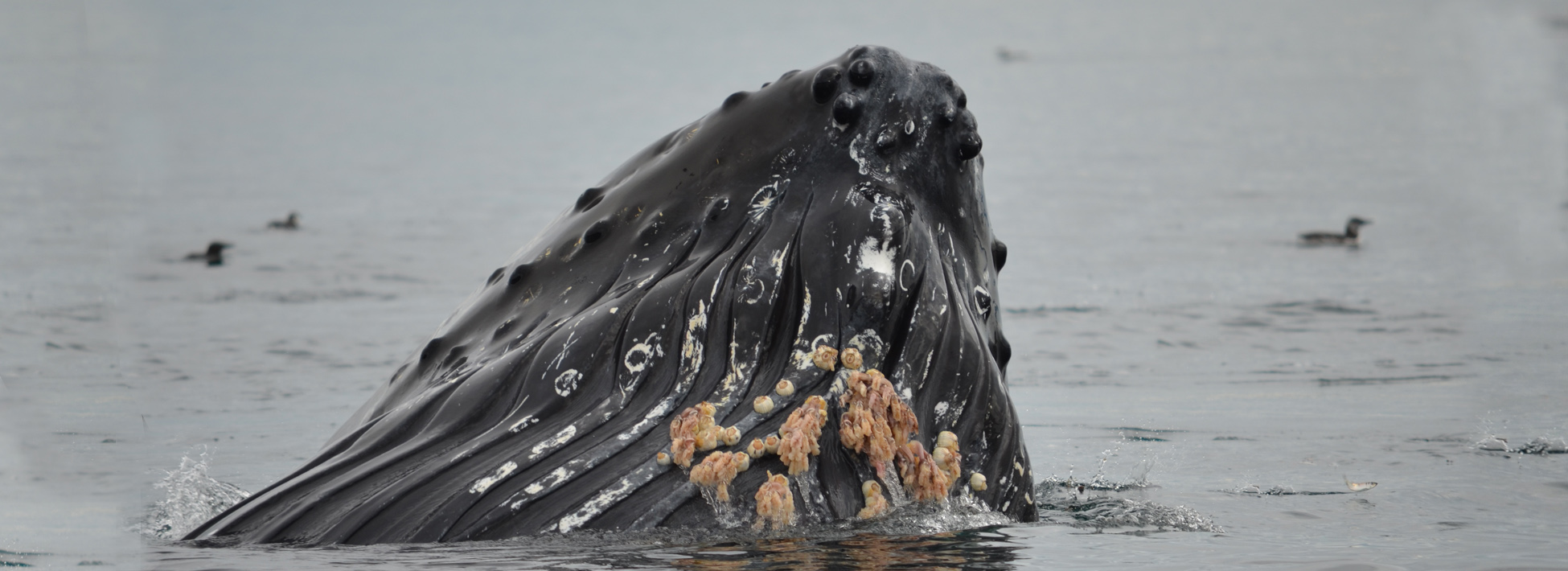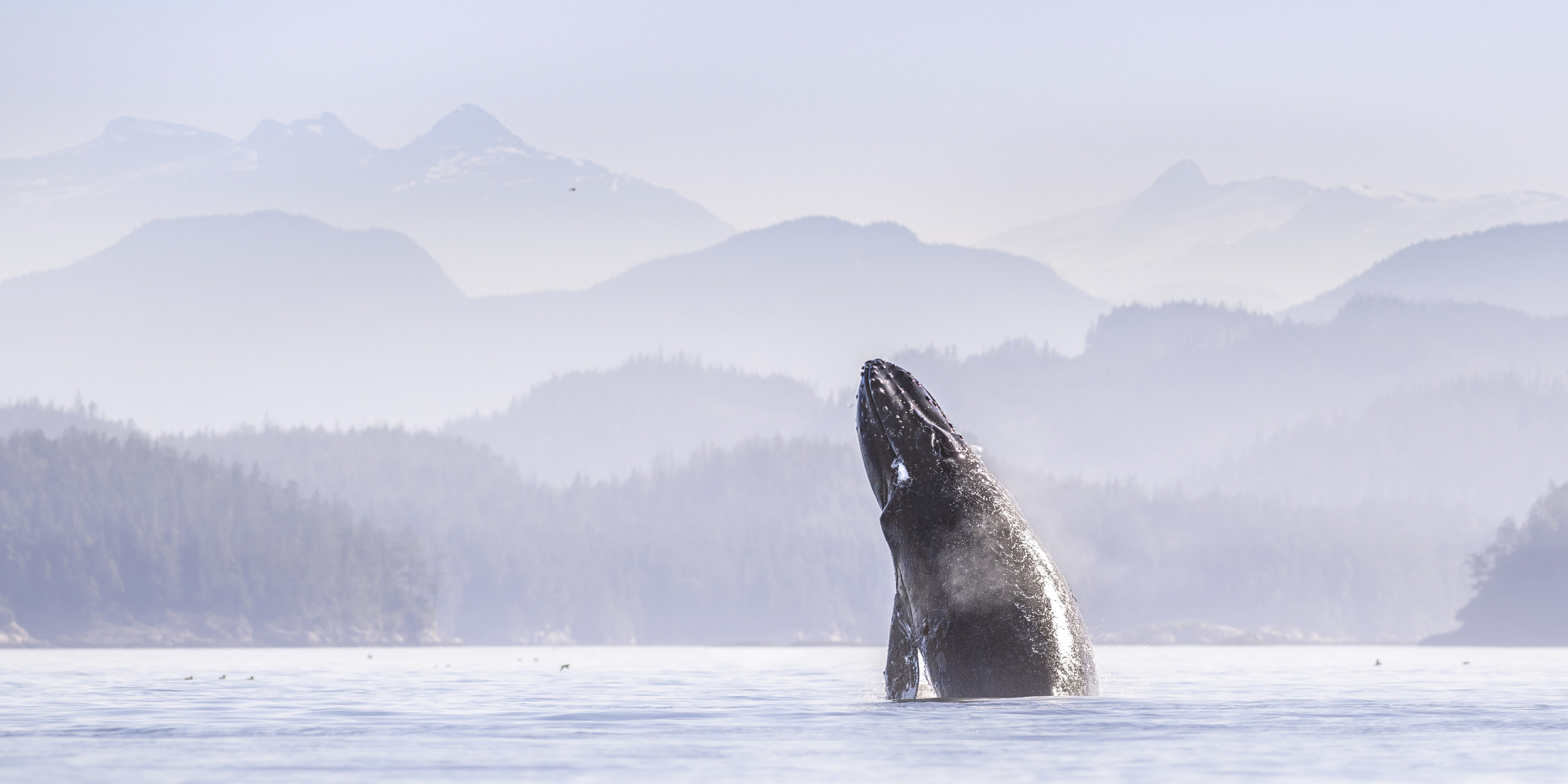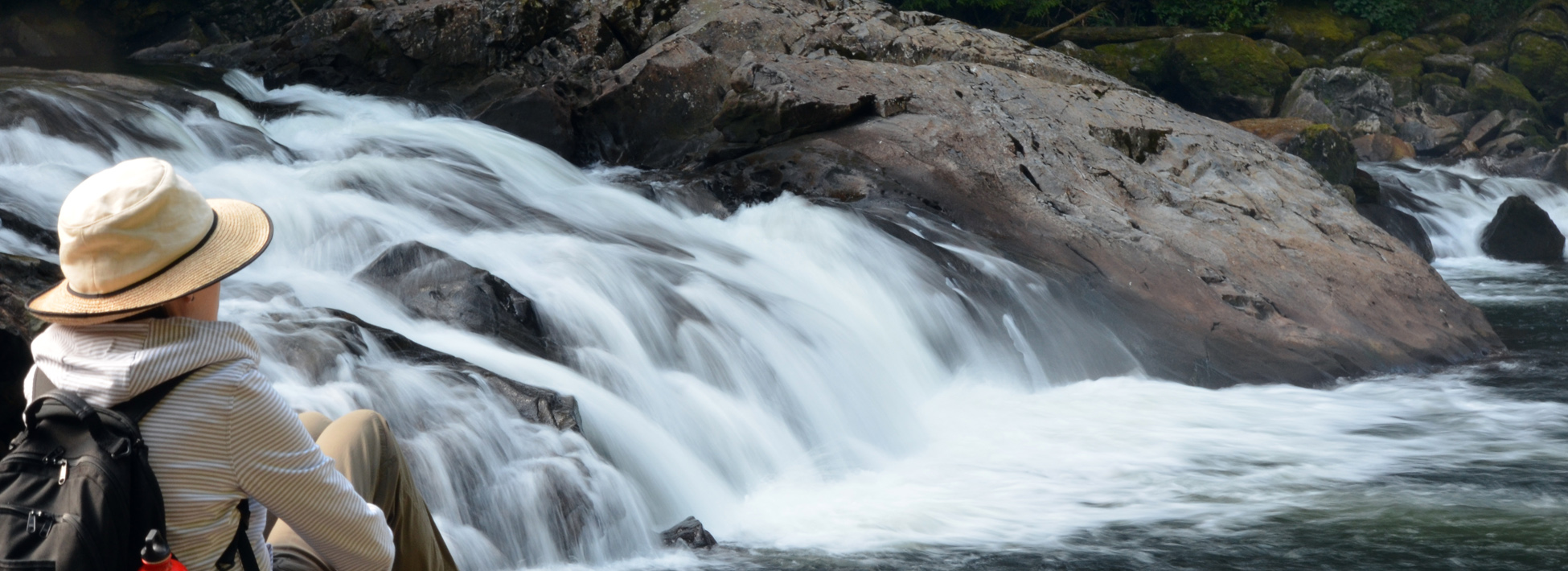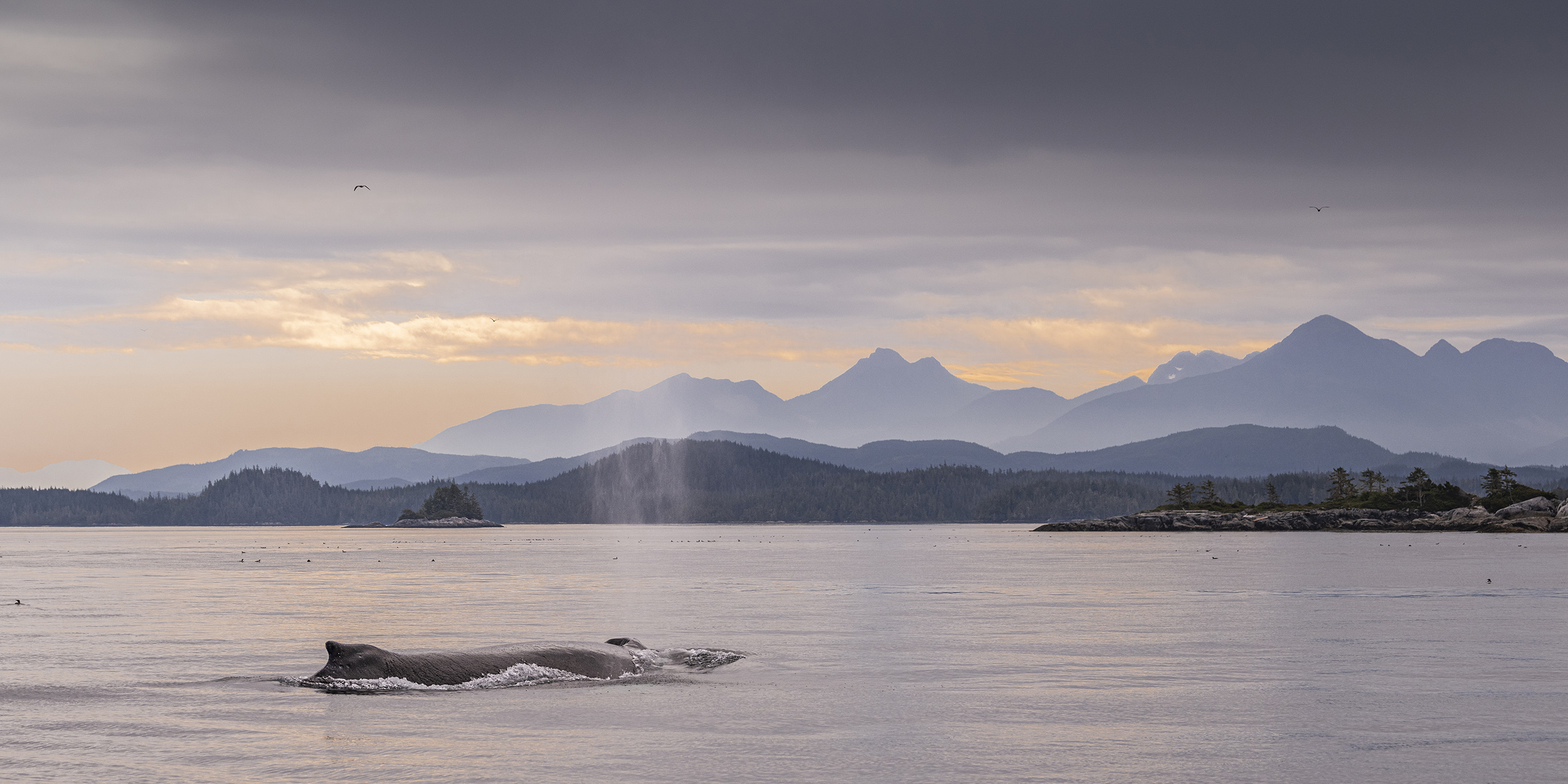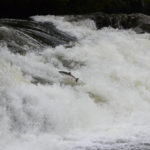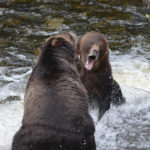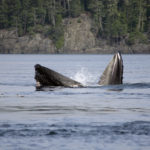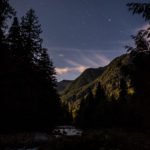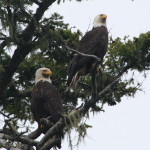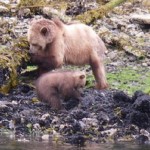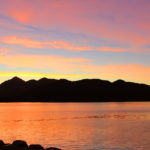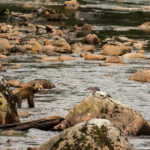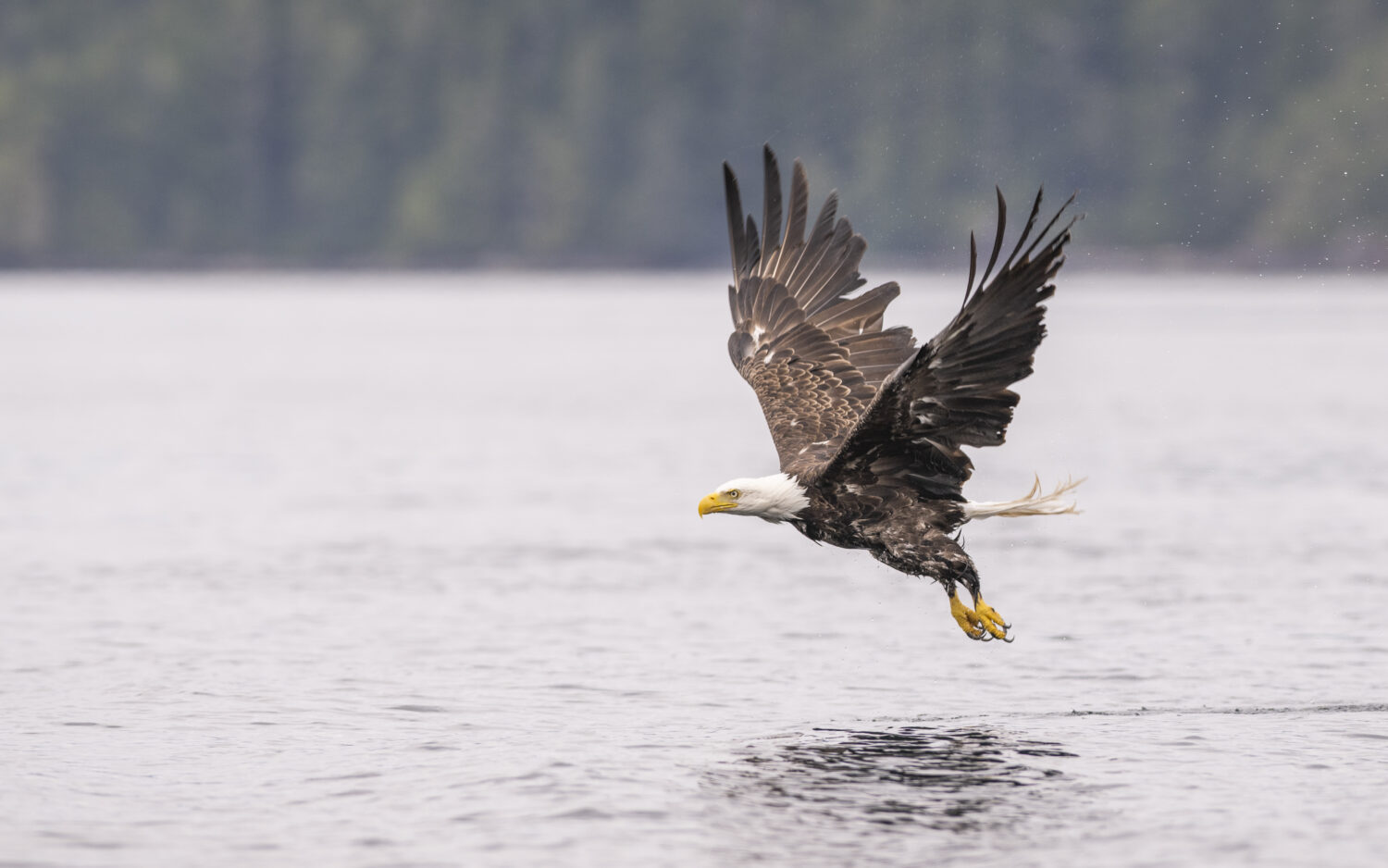Salmon are the lifeblood of our coastal ecosystem. Their journey back to their home rivers to spawn is often not an easy one. The salmon return to the same river which they were born years prior. How they know where they are going remains one of life’s great mysteries. The lucky few return, spawn and then all pacific salmon die after spawning, providing nutrients to the river and forest. This is a coho salmon leaping over the falls on the wild river trip.
Grizzly Bear and Wildlife Viewing Blog: Monthly Archives: February 2017
Grizzly Bear “Disagreements”
Grizzly Bears are a solitary animals. Mothers and cubs are together and sometimes siblings will stay together for a couple of years after they have been kicked out on their own. Other then this they are looking out for themselves. With the abundance of salmon in the rivers in the fall the Grizzlies learn to tolerate each other because they all have to eat. There are, however disputes over the prime fish areas. Generally these aren’t much more then a stare down and some growling, but they do occasionally end up in a bit of a scrap.
Humpback Whale Feeding
The humpback whales come to our area for one reason and that is to feed. They feed heavily on krill and small fish such as herring. In this photo you can see that the humpback has done what is called a lunge feed. This is where they come straight up with their mouths open and try and consume as many fish as possible. The small fish you can see jumping are herring.
River Scene at Night
Grizzly Bears Diving for Salmon
I took this video up at the viewing platforms in late August. The viewing was great and there are a ton of pink salmon in the pool. Bears normally do not like to put their ears underwater when looking for salmon. This year, however we saw a huge increase in “diving bears”
https://www.facebook.com/sailcone/videos/1734088896617433/
Bald Eagle Pair
Bald Eagles are a common and always welcome sight in our area. They are an opportunistic feeders and although they don’t migrate they do tend to move around with the food. In the spring we see large numbers of them in Blackfish Sounds feeding on the vast amounts of herring. As the salmon enter the rivers many of these eagles do the same feeding on the carcases of spawned out salmon. Eagles mate for life so when you see two of these birds together they are usually a pair. It is hard to tell male from female in these birds, although the female eagle tends to be larger and has a slightly deeper call.
Beach Feeding Grizzly Bears
Of course Grizzly Bears enjoy feeding on salmon. Salmon is not the only seafood that they enjoy, however. At low tide the beaches are covered in protein rich shellfish. This mother and cub are feeding on mussels. The bears chew the mussels shell and all. On a calm, quiet day you can often hear the distinctive “crunching” of shells.
Views from the Lodge
Emily the Grizzly Bear
This photo was taken be Felix Rome who helped out Trapper Rick at the river last year. This particular bear is known as Emily and has been around the area for many years having several sets of cubs. It is always rewarding for us to be able to watch the same bears return year after year and to watch them grow up.
Herring Ball Pt2
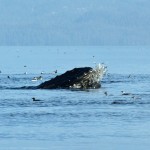 Fish and birds aren’t the only ones who feed on herring balls. Humpbacks often do what is called a lunge feed where they come up from underneath the herring ball with their mouth open and try to consume as many fish as possible. Often when we are out whale watching you will see gulls feeding on a herring ball. When the birds lift off the water it usually means one of two things. Either the fish have dispersed or there is a whale coming up for a snack.
Fish and birds aren’t the only ones who feed on herring balls. Humpbacks often do what is called a lunge feed where they come up from underneath the herring ball with their mouth open and try to consume as many fish as possible. Often when we are out whale watching you will see gulls feeding on a herring ball. When the birds lift off the water it usually means one of two things. Either the fish have dispersed or there is a whale coming up for a snack.

